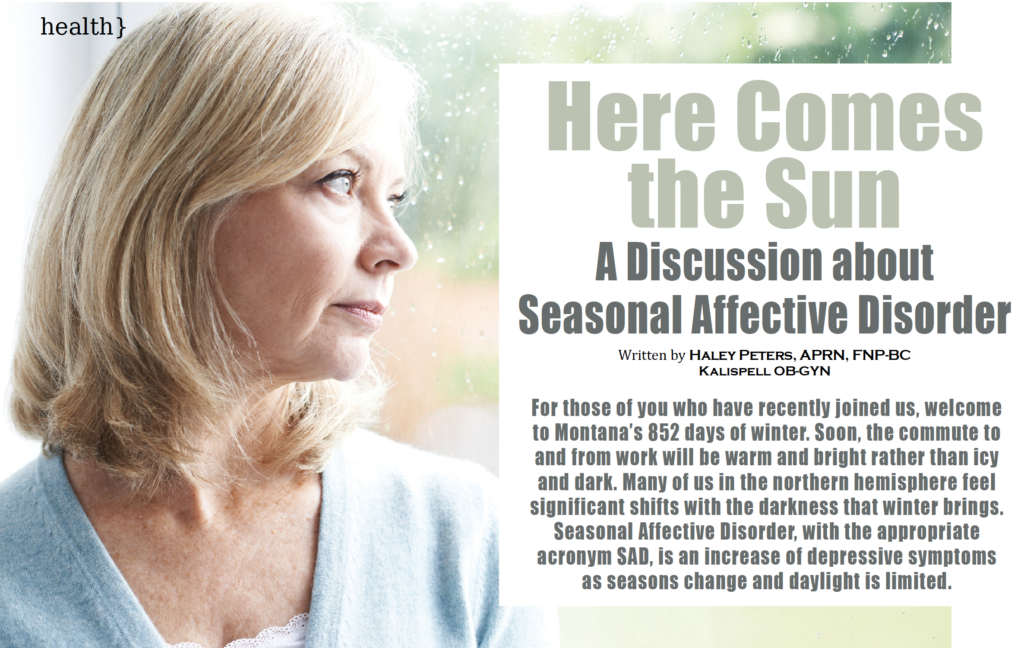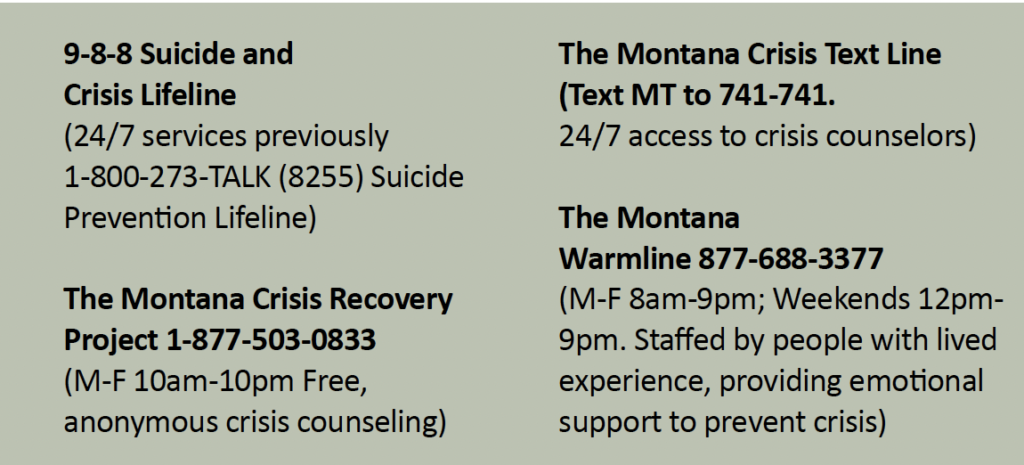A Discussion about Seasonal Affective Disorder

Symptoms of seasonal affective disorder (SAD) resolve with seasonal shifts and make this disorder separate from an underlying diagnosis of depression, anxiety, or bipolar disorder. These shifting symptoms typically include more feelings of isolation or withdrawal from one’s social support, increased depression, and fatigue or lack of energy.
There is a difficult line to draw between the energetic slowing down of winter and SAD. For many individuals with mental health symptoms, this “line” means that functioning in the “normal” societal rhythm is no longer a reality. The desire for hibernation or confinement overtakes the ability to perform day-to-day tasks. It should be noted that there is also a form of seasonal affective disorder with primarily anxious and restless symptoms that is more common during the summer months. For the timing of this discussion, however, I will primarily focus on the depressive form and symptoms of SAD.
Timing is everything. As mentioned above, the problematic separation from SAD and other mental health conditions is timing. Symptoms typically occur in a fall-to-winter pattern, with resolution in the spring and summer months. Due to this, it might take multiple years to identify the shift or seek support. There is also an association with major winter holidays and worsening mental health disorders. I
s this the seasonal pressure to perform traditions that don’t align with your values? Is this the isolation of not being able to travel to or be near to those who you would like? Is this associated with being around toxic family dynamics? Or is it none, some, or all of the above? Winter can be hard with or without seasonal shifts in mood. If you, in any season, are experiencing worsening mental health, please contact a trusted healthcare provider or reach out for support. Resources are also listed at the bottom of this article.
So now you realize your uptick in “winter blues” is really SAD. What can you do? There is controversial data around the treatment of seasonal affective disorder. The information given is for education and support, not individualized treatment. Again, please have an individualized discussion with your healthcare provider before implementing any medication or supplementation.
Underlying Causes:
Many mental health disorders share symptoms of underlying health disorders such as thyroid hormone imbalances, anemia, or autoimmune conditions. Focusing on the timing of these symptoms and discussing of comprehensive symptoms is beneficial when having an initial workup.
Light Therapy and Activity:
Which came first, walking outside or seeing the sunshine? Both light therapy and regular exercise or activity are primary treatments for seasonal affective disorder. Time outside or in light best supports SAD symptoms by supporting a circadian rhythm (sleep cycle rhythm). This is seen with hypothalamus activation, a part of the brain in charge of many of your hormones. Activity not only releases endorphins but also supports better sleep at the end of the day, which can be an ongoing struggle for many people facing mental health symptoms.
Medications:
To take or not to take the medications? There is no right or wrong with taking medications, but discussing options with an open mind and with a trusted source is best. Typical antidepressant medications include serotonin reuptake inhibitors (SSRIs) and selective norepinephrine reuptake inhibitors (SNRIs). However, other medications exist as valid options as well, depending on specific symptoms of mental health. Many people on baseline medications year-round, will work with their provider to increase their doses during the winter months to support SAD symptoms.
Supplements:
The world of supplements can be confusing, so please discuss this with a healthcare provider. Many will recommend vitamin D3 as well as calcium (for absorption). Vitamin D3 is synthesized from sunlight, but if light exposure is low and intake is low, these levels can drop in the winter months. Be mindful that many supplements can build up in your body over time, and monitoring levels might be required.
Many people are in counseling and benefit from talking to a trained professional. Counseling can be used to reframe ways of self-talk, support better coping strategies, or highlight patterns that might need more awareness or support. Counseling is preventative and should be used over time. In times of crisis, please refer below for the resources.
Realistic Expectations:
Winter months typically lend to a slower pace; where food that has lasted since fall (squashes, onions, root vegetables) take longer to cook and digest. In addition, the “to-do list” of summer maintenance might be buried under snow and ice.
Making sure you get enough rest and sleep are also supportive of your functioning. It is okay to say no if you are feeling overcommitted or overworked. Be realistic with what is the level of too much for you and your family.
For discussion with your healthcare provider, make sure you share that the appointment is for a mood concern, so time can be appropriately scheduled for your care.

This article appears in 406 Woman magazine.
